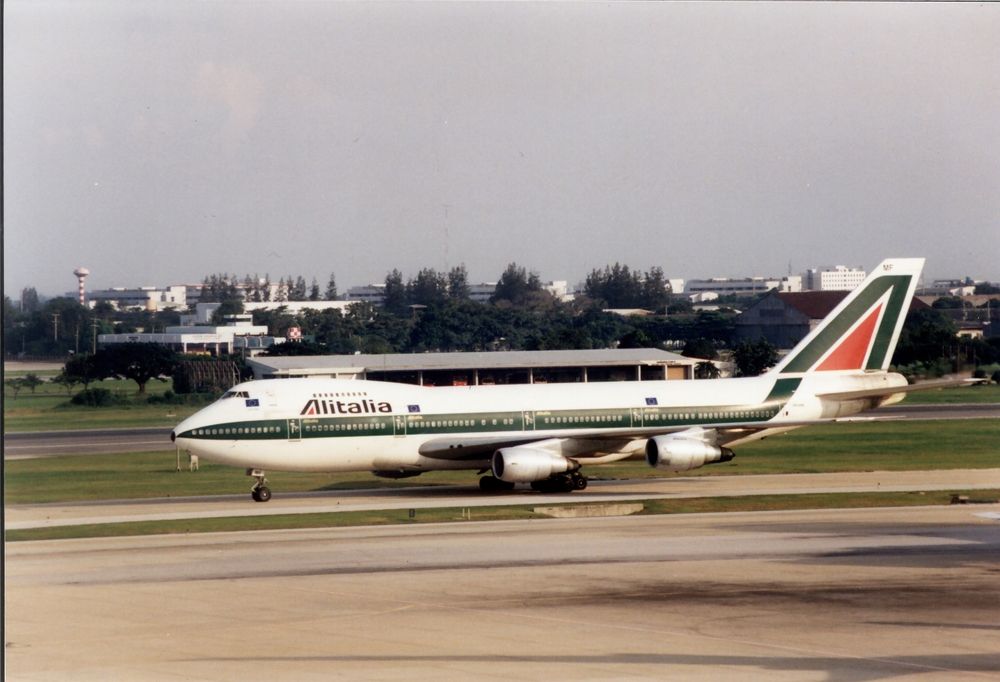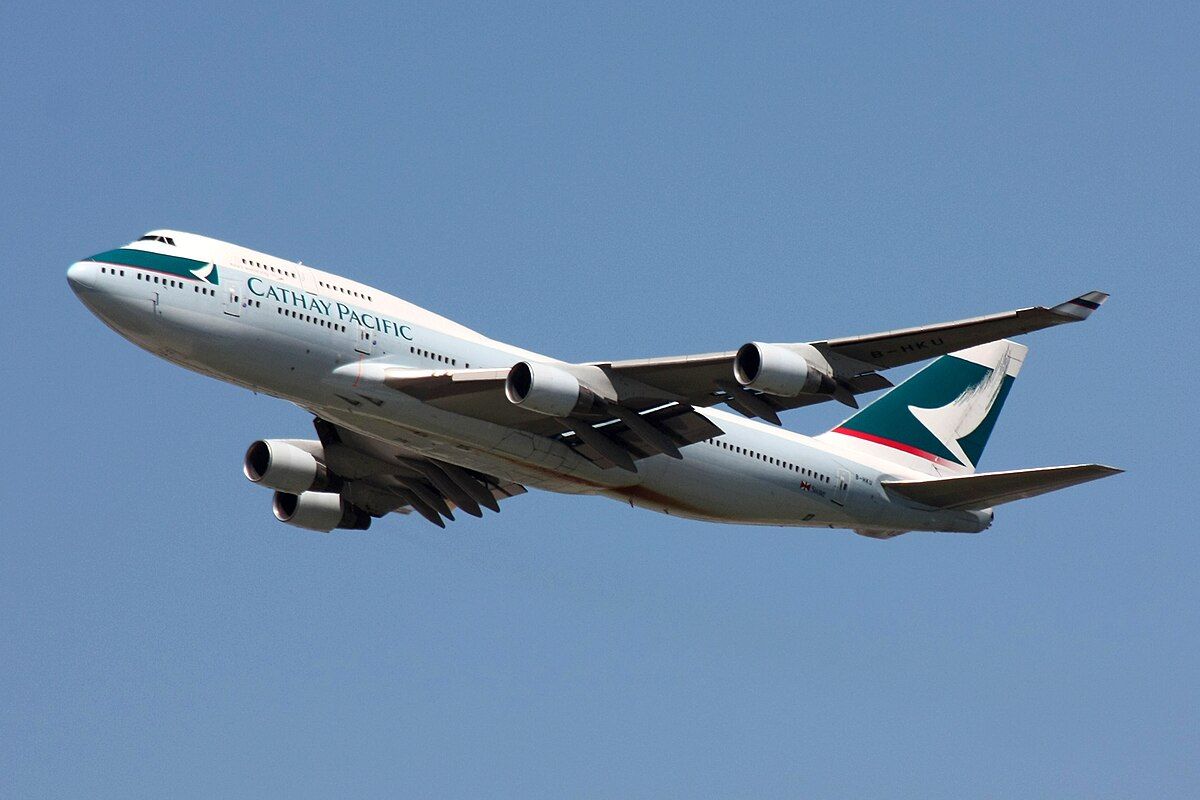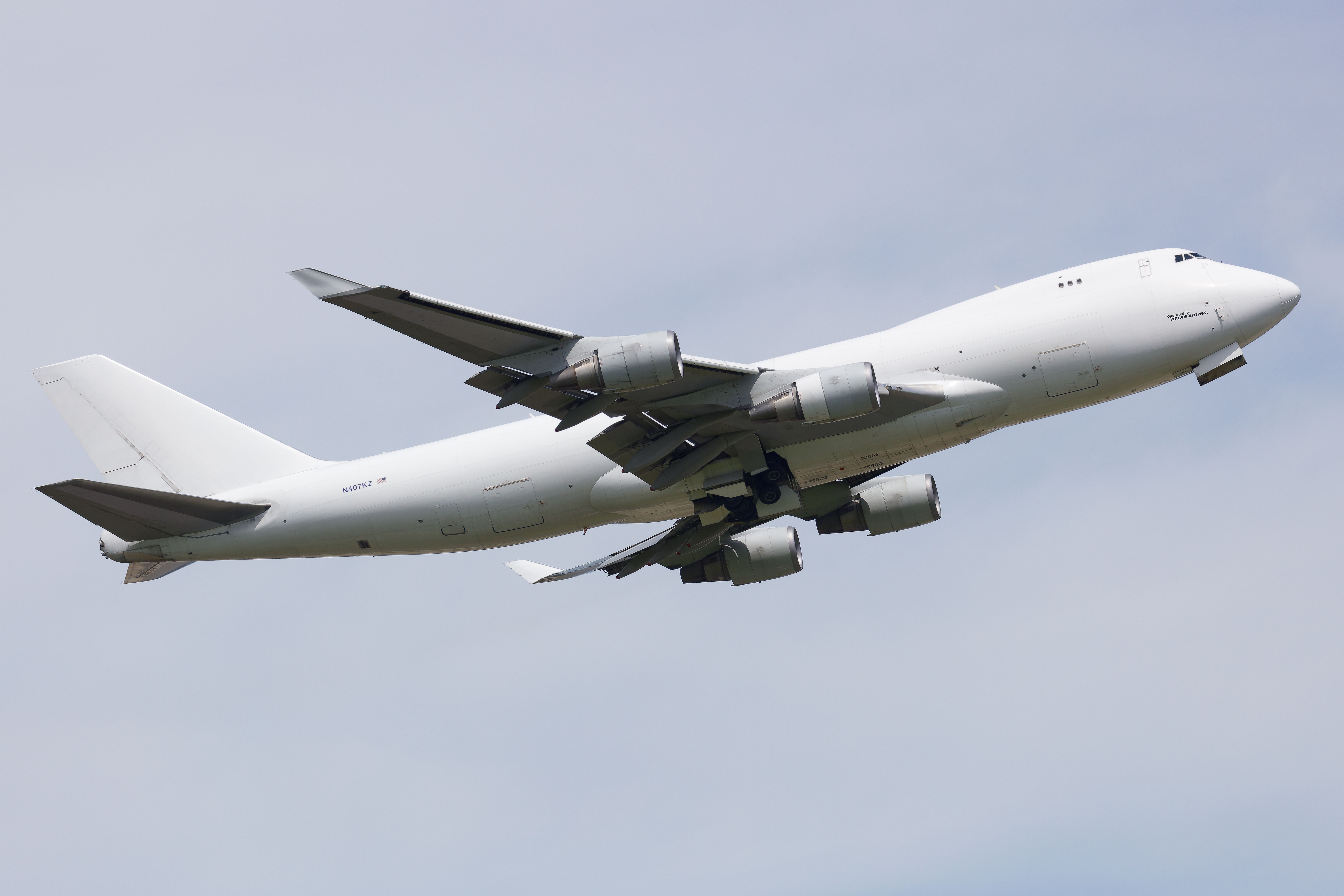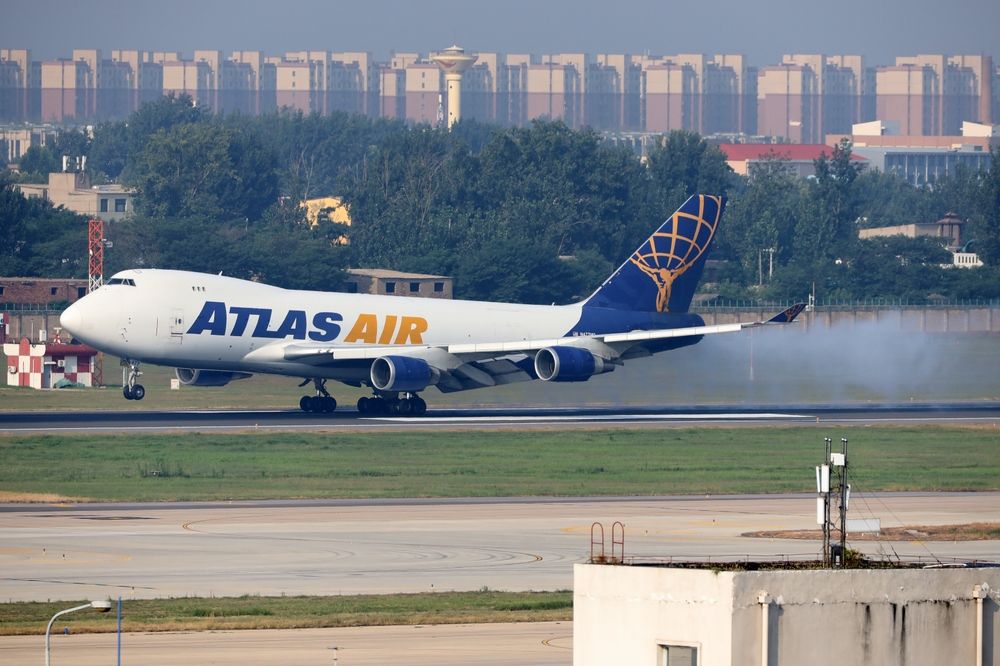The Boeing 747 is a long-range widebody airliner that has dominated the skies for over fifty years. The four-engine aircraft, which features a unique half-double-decker fuselage, was the first airplane to be called a jumbo jet. It has become one of the most notable aircraft in the history of aviation, often called the “Queen of the Skies.”
However, since the aircraft was first introduced in the late 1960s, many of these aircraft have gotten too old for commercial operations. Even so, the aircraft has found a popular role with cargo airlines, with many aircraft still operating in freighter operations to this day. ![]() Lufthansa, Air China, Korean Air, Air India, Asiana, and Rossiya currently operate a Boeing 747 in a passenger variant. In total, about 50 Boeing 747s are still registered for passenger service, although fewer than 40 are actively flying, with most of the operators outside of North America. However, one Boeing 747-400 in a passenger configuration remains flying in the United States. Let’s take a closer look at this unique aircraft, as well as some of the other Boeing 747-400s flown by Atlas Air.
Lufthansa, Air China, Korean Air, Air India, Asiana, and Rossiya currently operate a Boeing 747 in a passenger variant. In total, about 50 Boeing 747s are still registered for passenger service, although fewer than 40 are actively flying, with most of the operators outside of North America. However, one Boeing 747-400 in a passenger configuration remains flying in the United States. Let’s take a closer look at this unique aircraft, as well as some of the other Boeing 747-400s flown by Atlas Air.
A Brief History Of The Boeing 747 Series
In the early 1960s, the age of commercial jet transportation, specifically with the introduction of the Boeing 707 and the Douglas DC-8, revolutionized long-distance travel. However, several major airline customers, including Pan American Airways, expressed an interest in a new jet airliner that was over twice the size of the existing Boeing 707. Because of this, legendary aviation engineer Joe Sutter was tasked with designing a new aircraft, later designated the Boeing 747.
Pan Am was selected as the launch customer for this new aircraft, placing an order for 25 initial 747s. Boeing then had to develop a new production plant in Everett, Washington, that was capable of producing such a large aircraft. After a lengthy design process, Boeing rolled the first 747 out of its production facility on September 30, 1968. The first Boeing 747 conducted its maiden flight in February 1969, kicking off the extensive flight testing program.
Several delays were caused during the testing program, mostly due to the discovery of wing oscillation that required several redesigns and problems with Pratt & Whitney JT9D engines. However, the aircraft was eventually certified by the Federal Aviation Administration (FAA) in December 1969. It was later introduced by Pan Am on its popular New York to London route. Since then, Boeing has produced the 747 series from 1969 through 2023. The company manufactured over 1,500 total variants, flying for a wide variety of airlines around the world.
A Look At The Introduction Of The Boeing 747-400
The Boeing 747-400 is one of Boeing’s most popular variants of the 747 series. This aircraft retained the same airframe as earlier 747 variants, but it featured more efficient engines and around 1,000 nautical miles (1,200 miles) more range. It was first introduced to the public at the Farnborough Airshow in September 1984.
The first Boeing 747-400 was rolled out of Boeing’s production facility in January 1988 and conducted its maiden flight in April of the same year. The FAA awarded the aircraft its type certification in January 1989. Northwest Airlines, the launch customer of the variant, officially introduced the first Boeing 747-400 into commercial service on February 9, 1989.
Boeing produced several configurations of the 747-400. Passenger variants were produced from 1988 through 2005. The airline also introduced a combi-configuration in 1989 and produced this variant through 2002. A more basic freighter configuration was produced from 1993 through 2009. In total, nearly 700 747-400s were manufactured by Boeing, as the aircraft also served as the inspiration for the 747-8 variant.
The Design Features And Performance Specifications Of The Boeing 747-400
The basic airframe of the 747-400 is similar to previous variants of the 747 family. However, Boeing also introduced wider and lighter wings that utilized winglets. This helped to increase its range and improved its takeoff performance. Many of the other major features remain the same as previous 747 variants, although Boeing implemented carbon brakes instead of steel brakes, which helped to save nearly 2,000 pounds of weight on the aircraft.
Like other 747 variants, the Boeing 747-400 can be powered by three different engine options. This includes the Pratt & Whitney PW4000, the General Electric CF6, or the Rolls-Royce RB211. These each provided the aircraft with around 60,000 pounds of thrust, depending on the variant. This helped the 747-400 to achieve the following performance specifications:
|
Length |
231 feet ten inches |
|---|---|
|
Height |
63 feet eight inches |
|
Wingspan |
211 feet five inches |
|
Maximum takeoff weight (MTOW) |
875,000 pounds |
|
Typical cruise speed |
490 knots (564 miles per hour) |
|
Range |
7,285 nautical miles (8,385 miles) |
|
Service ceiling |
45,100 feet |
Inside the cockpit, the 747-100 utilized a glass cockpit with CRT displays. It was powered by a Honeywell flight management computer (FMC) and a Rockwell-Collins central maintenance computer (CMC). Inside the cabin, Boeing made several upgrades, including new cabin sidewalls, heat-resistant paneling, and larger storage bins. This helped to achieve a maximum capacity of 660 passengers, although a typical 3-class layout could accommodate around 416 passengers.
Historical Operators Of The Boeing 747-400
With nearly 700 Boeing 747-400s produced, the aircraft variant has seen the skies with a wide variety of operators. Historically, the aircraft was introduced by Northwest Airlines, which would later merge into ![]() Delta Air Lines, in 1989. Delta later inherited this fleet of 747-400s, although it eventually retired these aircraft from commercial service in 2017.
Delta Air Lines, in 1989. Delta later inherited this fleet of 747-400s, although it eventually retired these aircraft from commercial service in 2017.
However, the aircraft saw success with commercial operators around the world. British Airways was once the largest operator of the 747-400, flying 57 different variants until it retired its final aircraft in 2020. United Airlines was another heavy operator of the 747-400. It utilized 44 different 747-400s, typically on trans-Pacific routes from its San Francisco International Airport (SFO) or Chicago O’Hare International Airport (ORD) hubs.
Several Asian operators flew the 747-400, including All Nippon Airways. Japan Airlines operated a small fleet of 747-400s, although it was once the largest Boeing 747 operator, including all other variants. Several other airlines flew the 747-400 for commercial operations, including the following operators:
Where The Boeing 747-400 Is Utilized Today
Currently, just 50 passenger-configured Boeing 747-400s are still in service, although just under 40 are currently listed as active. The largest operator of passenger 747-400s is Lufthansa, which flies eight of these aircraft on popular routes from Frankfurt Airport (FRA) in Germany. Rossiya is another large owner of 747-400s, although it actively flies just one of its variants.
Several Asian airlines still fly the 747-400 at a limited capacity. Air India retains four 747-400s, but currently flies just one, mostly on short domestic routes. ![]() Air China flies its last active 747-400 on domestic routes as well as high-demand segments, such as Beijing to New York. Asiana Airlines flies another 747-400 on dense regional routes throughout Asia. Other regions of the world have popular 747 operators. Mahan Air flies two 747-400s on busy domestic routes, while Saudia leases two 747-400s for seasonal operations.
Air China flies its last active 747-400 on domestic routes as well as high-demand segments, such as Beijing to New York. Asiana Airlines flies another 747-400 on dense regional routes throughout Asia. Other regions of the world have popular 747 operators. Mahan Air flies two 747-400s on busy domestic routes, while Saudia leases two 747-400s for seasonal operations.
However, in cargo operations, the 747-400 remains a valuable asset. Atlas Air is the largest operator of the aircraft type, flying nearly 50 different variants for both cargo and passenger charters. Additionally, UPS Airlines, Silk Way West Airlines, and Aerotranscargo each operate small fleets of the 747-400 for cargo operations. Cathay Pacific, Klitta Air, and China Airlines Cargo are other operators of the aircraft type, although, like most operators, many 747-400s in their fleets are gradually being phased out.
A Look At The Last Boeing 747-400 With A Passenger Cabin In The United States
Currently, Atlas Air remains a major operator of the Boeing 747-400. Overall, the company operates five different Boeing 747-400s that have the ability to transport passengers. However, only one of these is configured with a high-density charter configuration, which is used to serve passenger missions, making it the last of its kind in the United States. The other four aircraft are configured for VIP or large-group charters and have been reconfigured from past passenger operations. The remaining four aircraft are N263SG, N322SG, N480MC, and N481MC.
However, the final passenger-configured Boeing 747-400 flown by Atlas Air is registered as N482MC. According to ch-aviation, this aircraft has a manufacturing serial number of 32340. It was also first delivered in June 2001, making it approximately 24.21 years old. This aircraft is also configured to accommodate 375 economy passengers, 66 premium economy passengers, and 14 business class customers, reaching a total of 455 passengers.
This aircraft was first ordered by Virgin Atlantic in November 2000. According to ch-aviation, the aircraft conducted its first flight in June 2001, before being delivered to the airline on June 18, 2001. Virgin Atlantic, which registered the aircraft as G-VROY, flew the aircraft from June 2001 through January 2021. However, Atlas Air acquired the aircraft in January 2021 and has flown the aircraft for high-density passenger operations ever since.

- Launch Customer(s)
-
Pan American World Airways
- First Delivery
-
January 22, 1970








